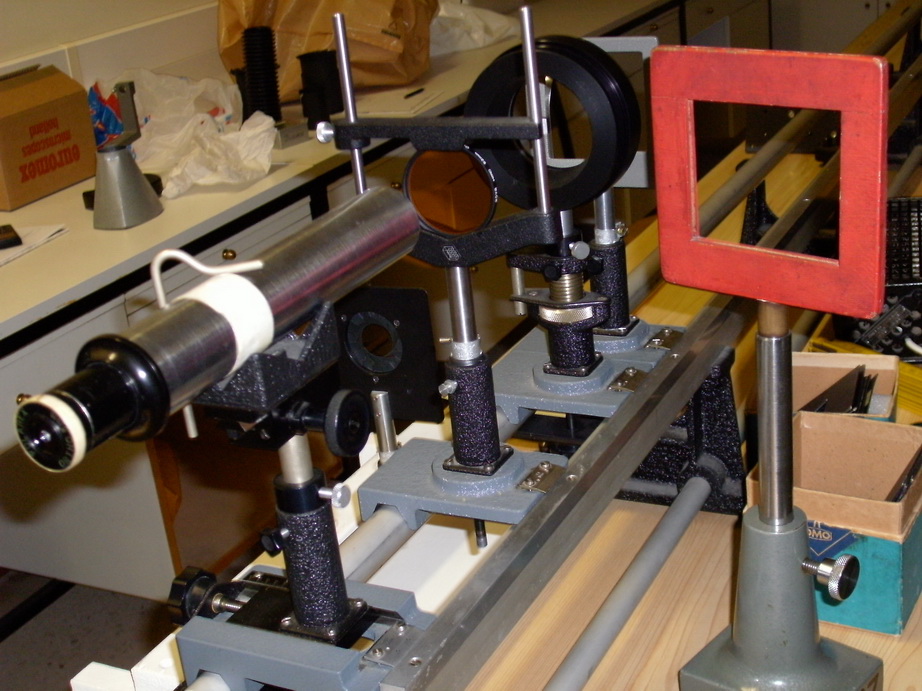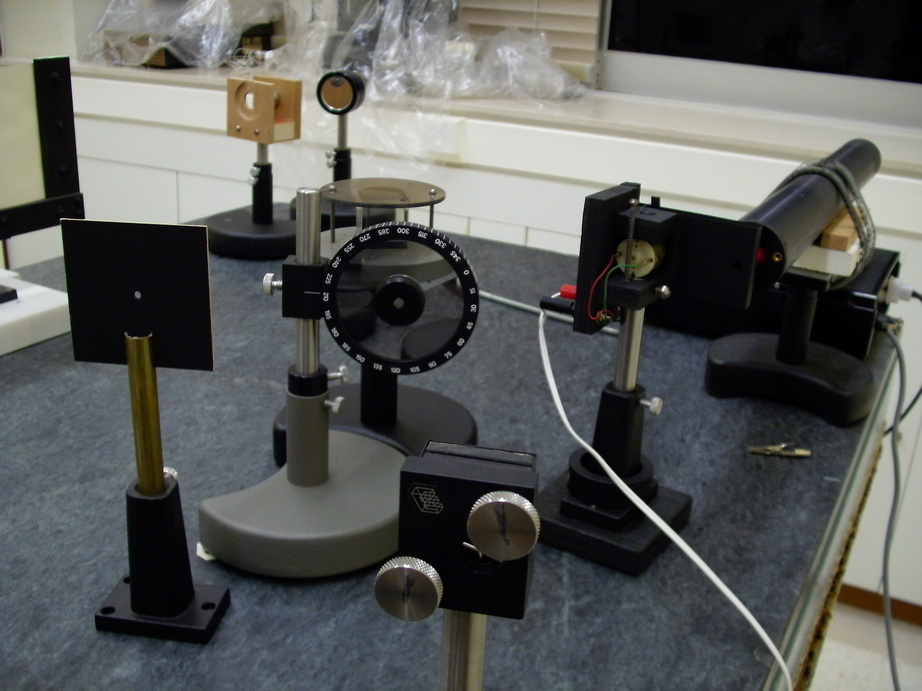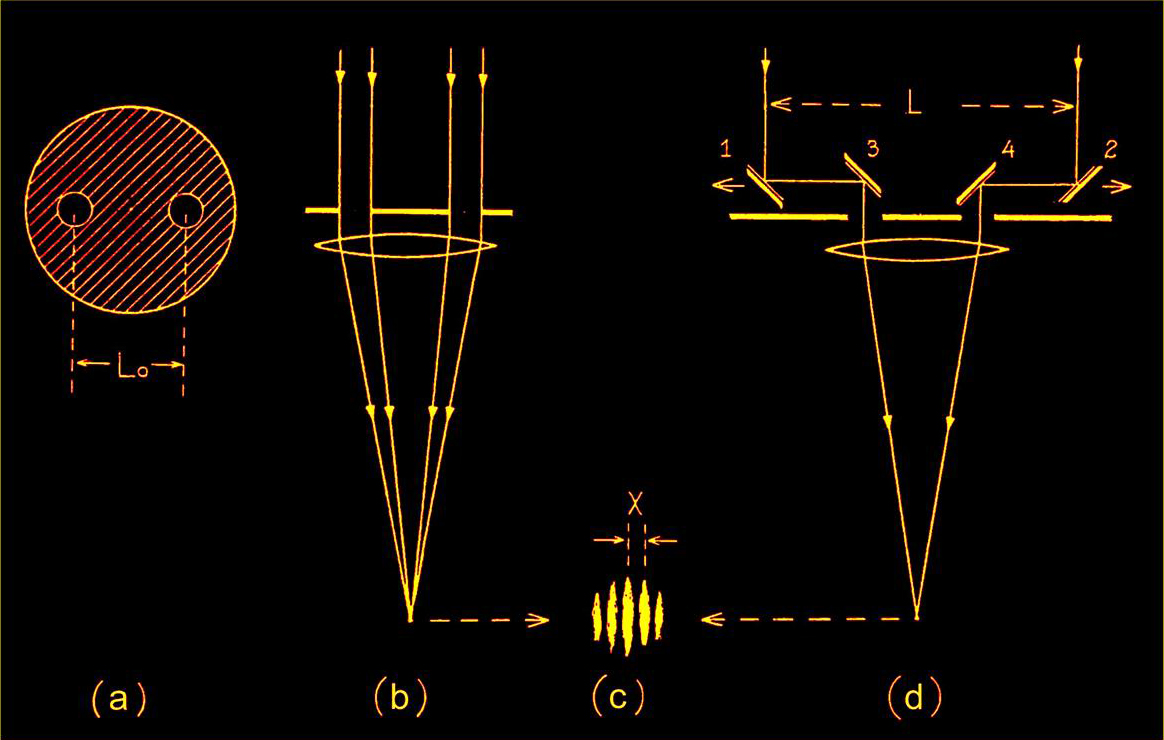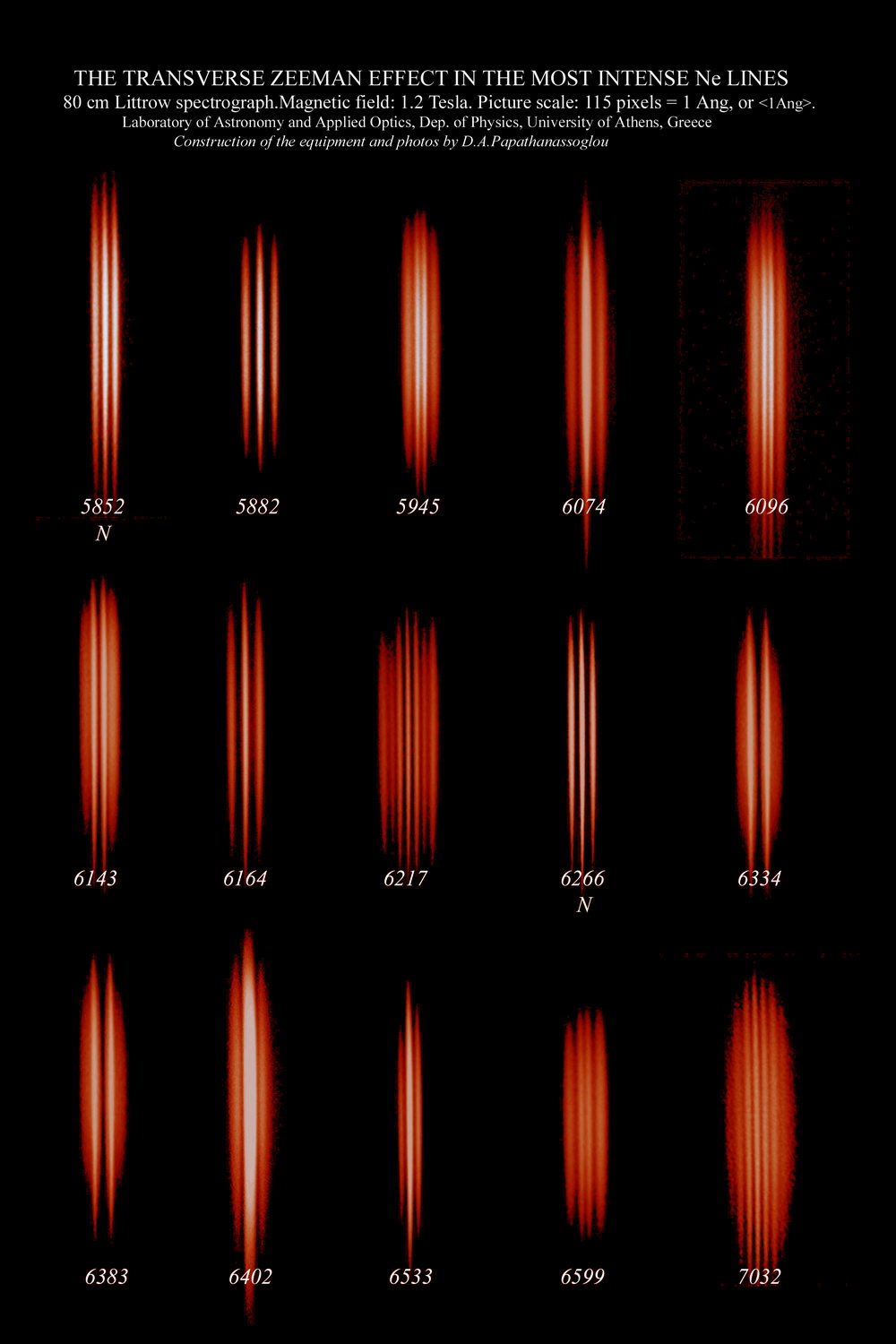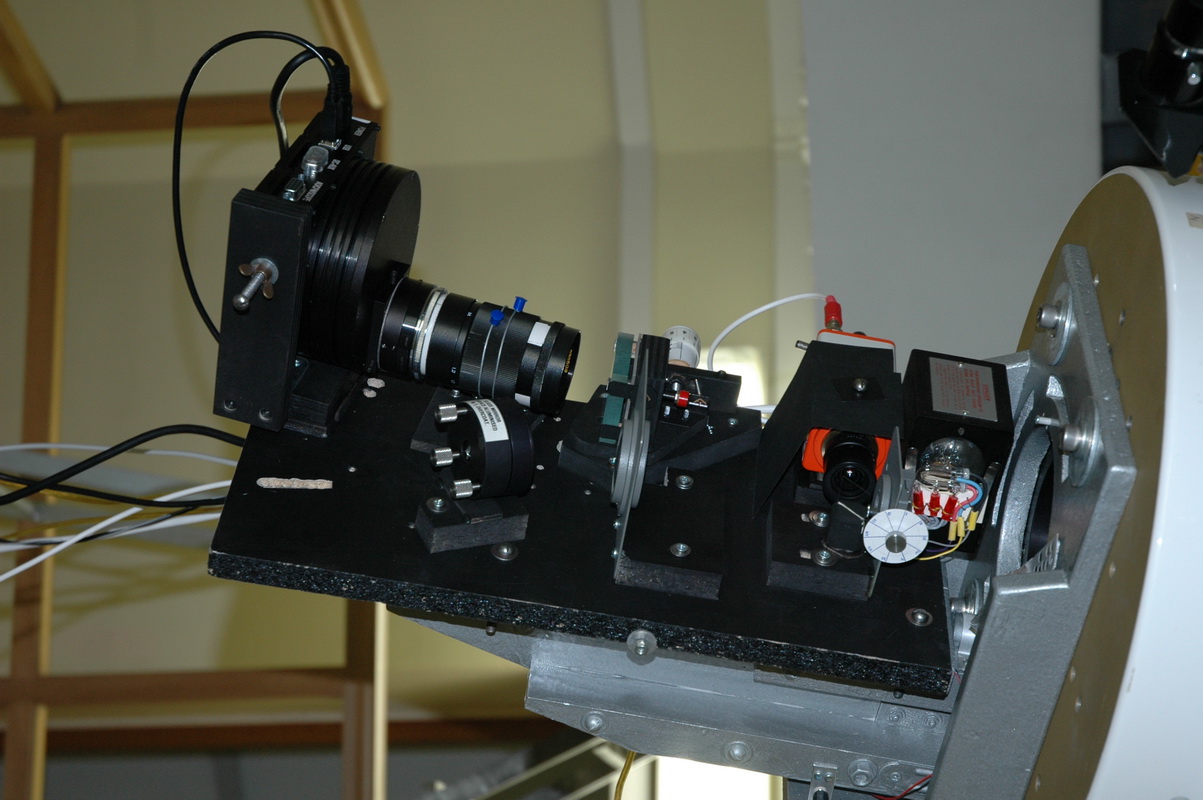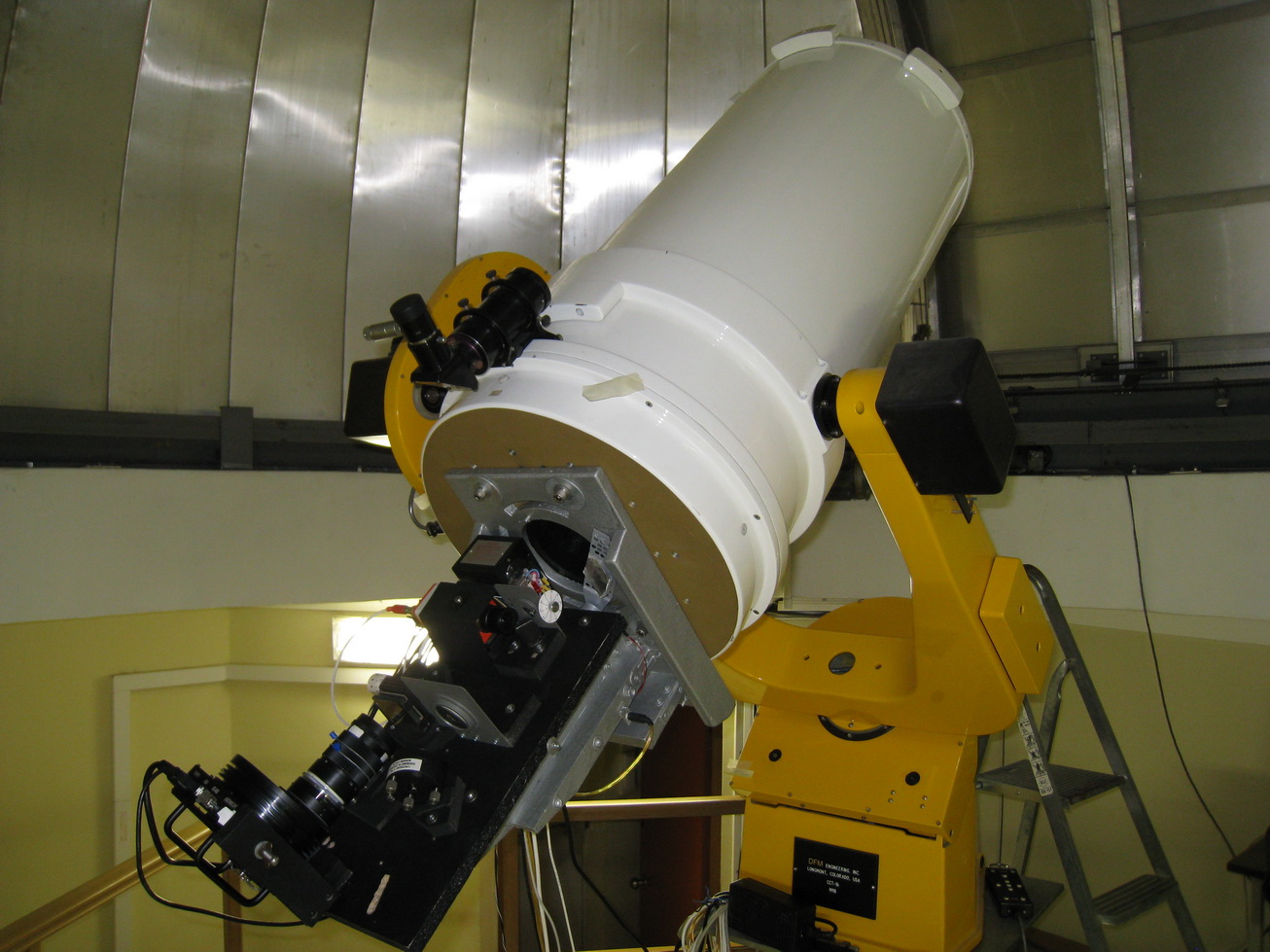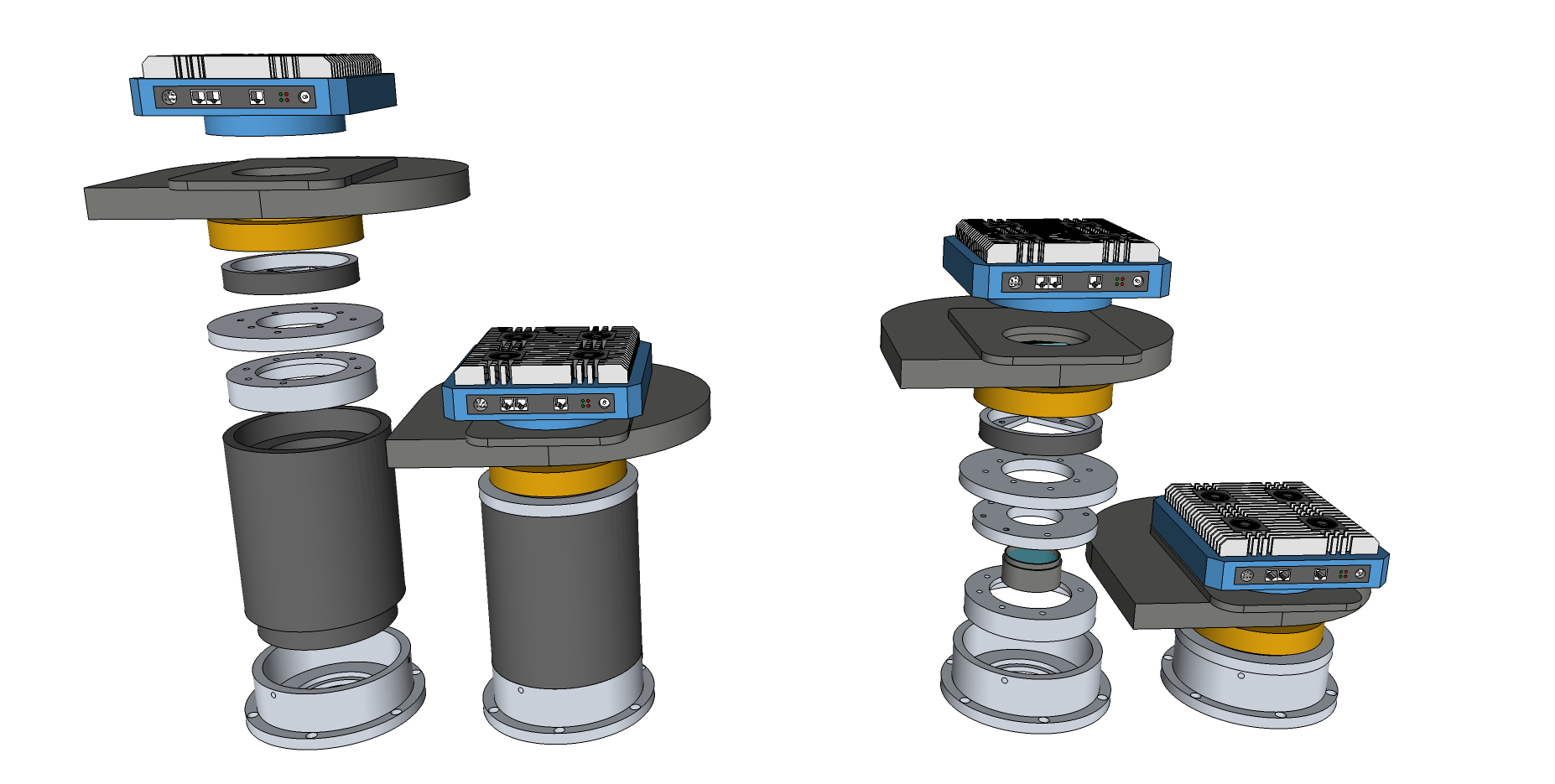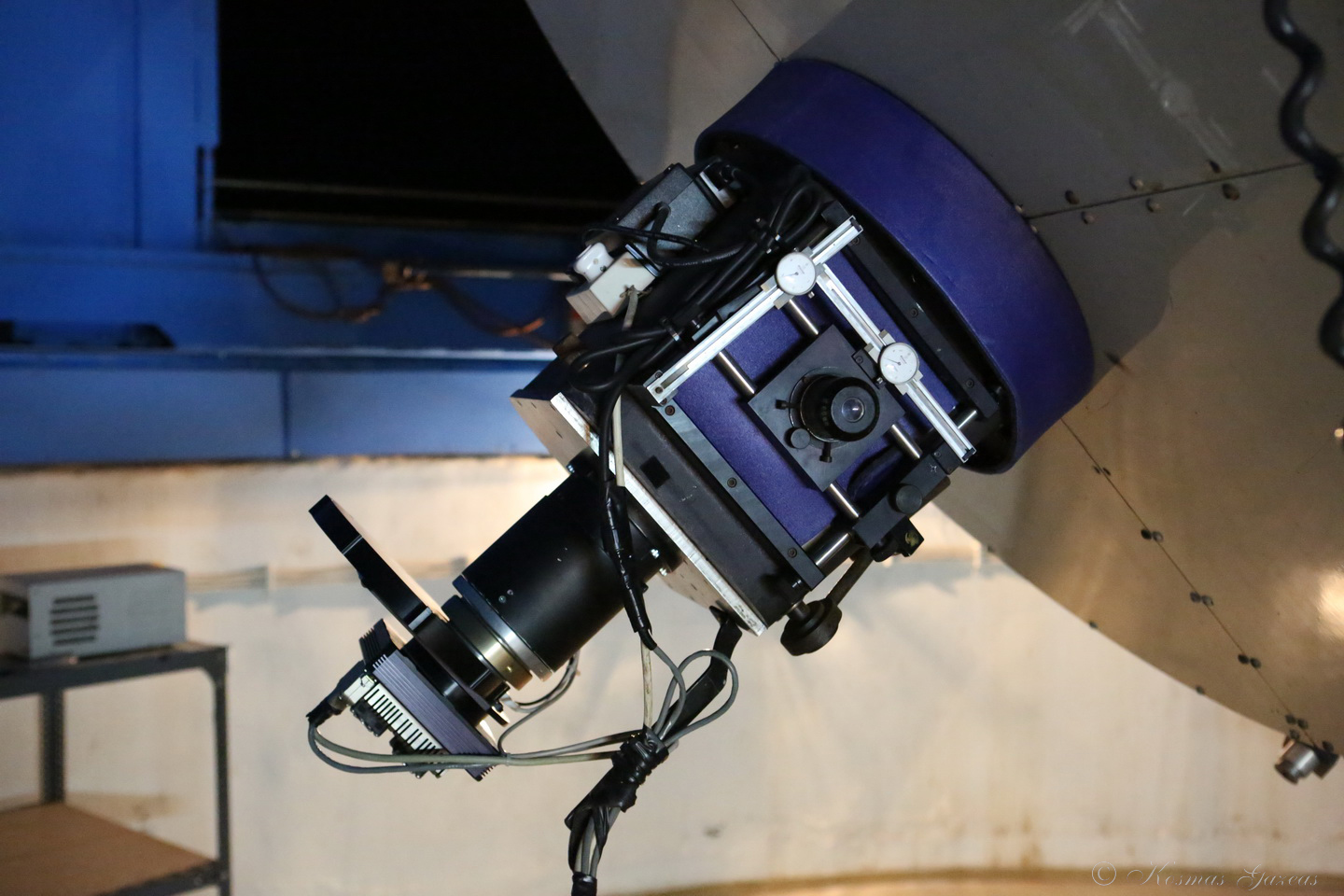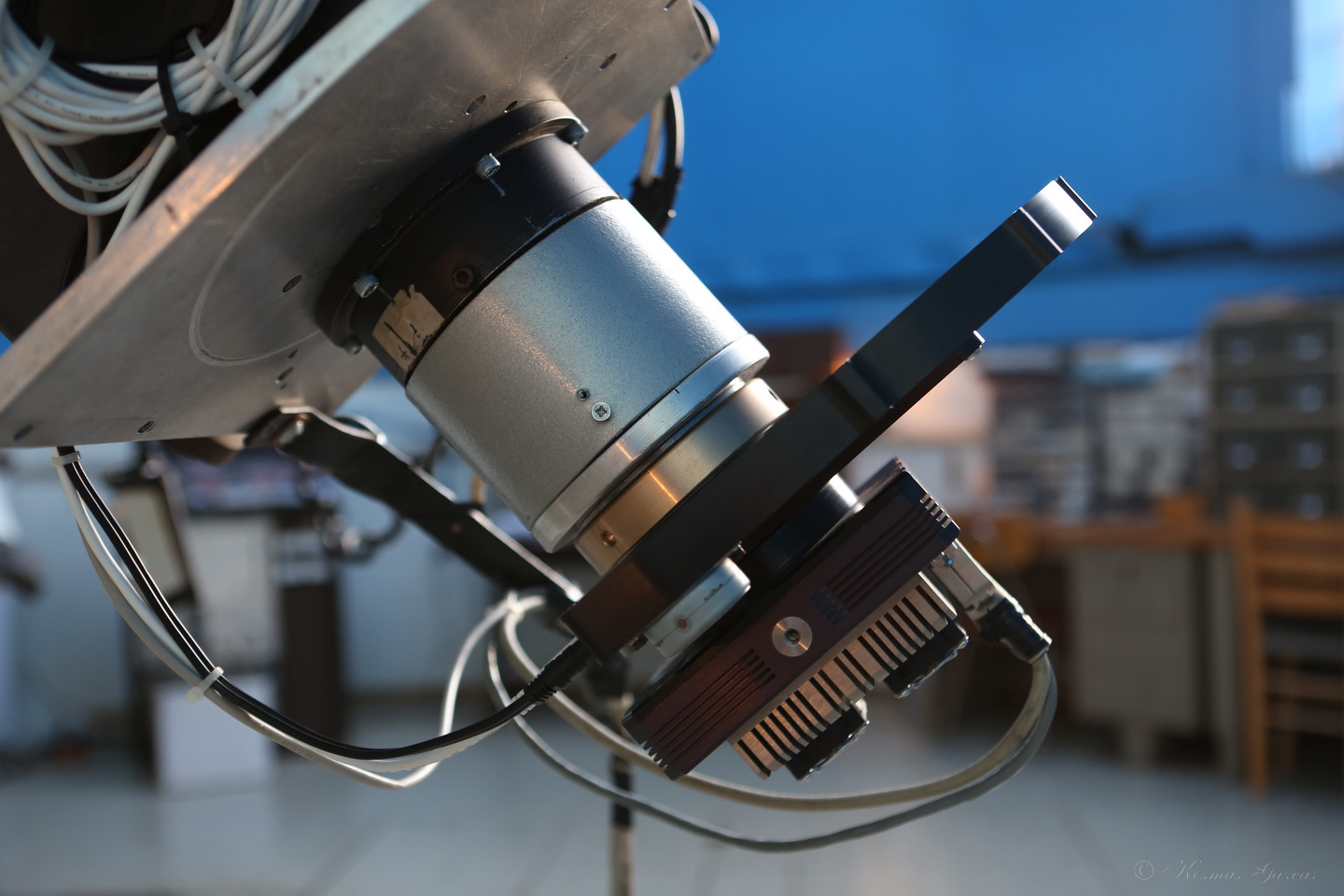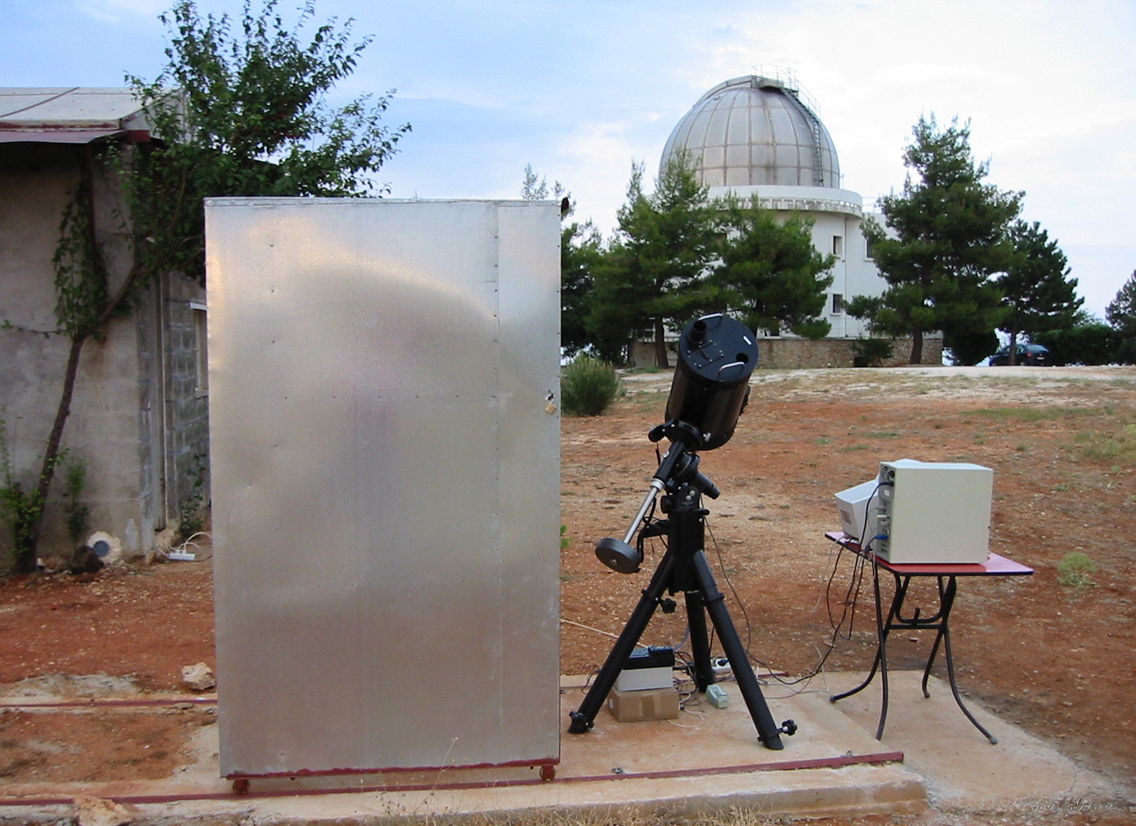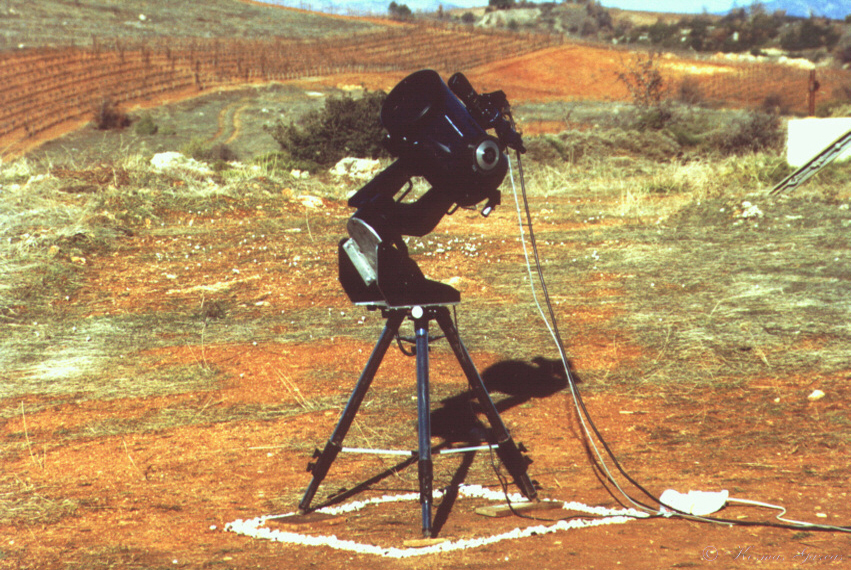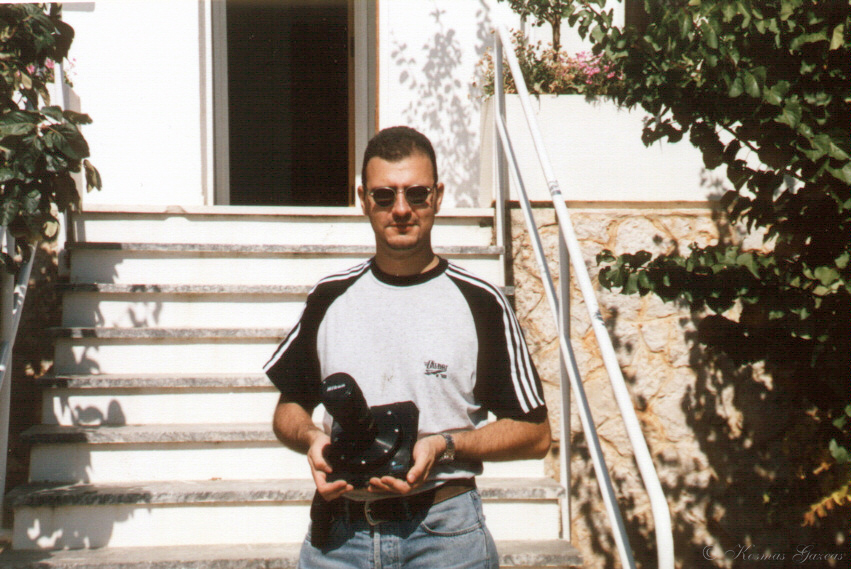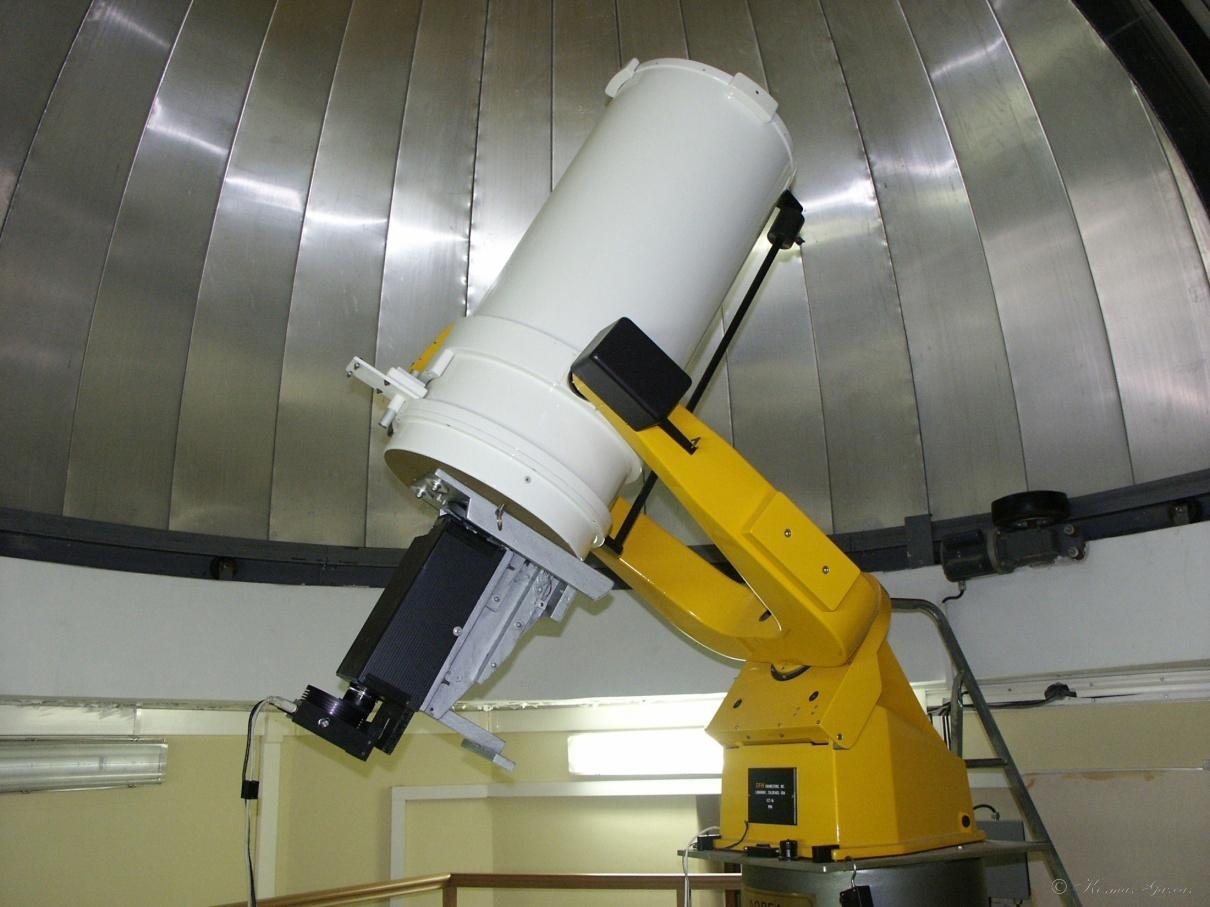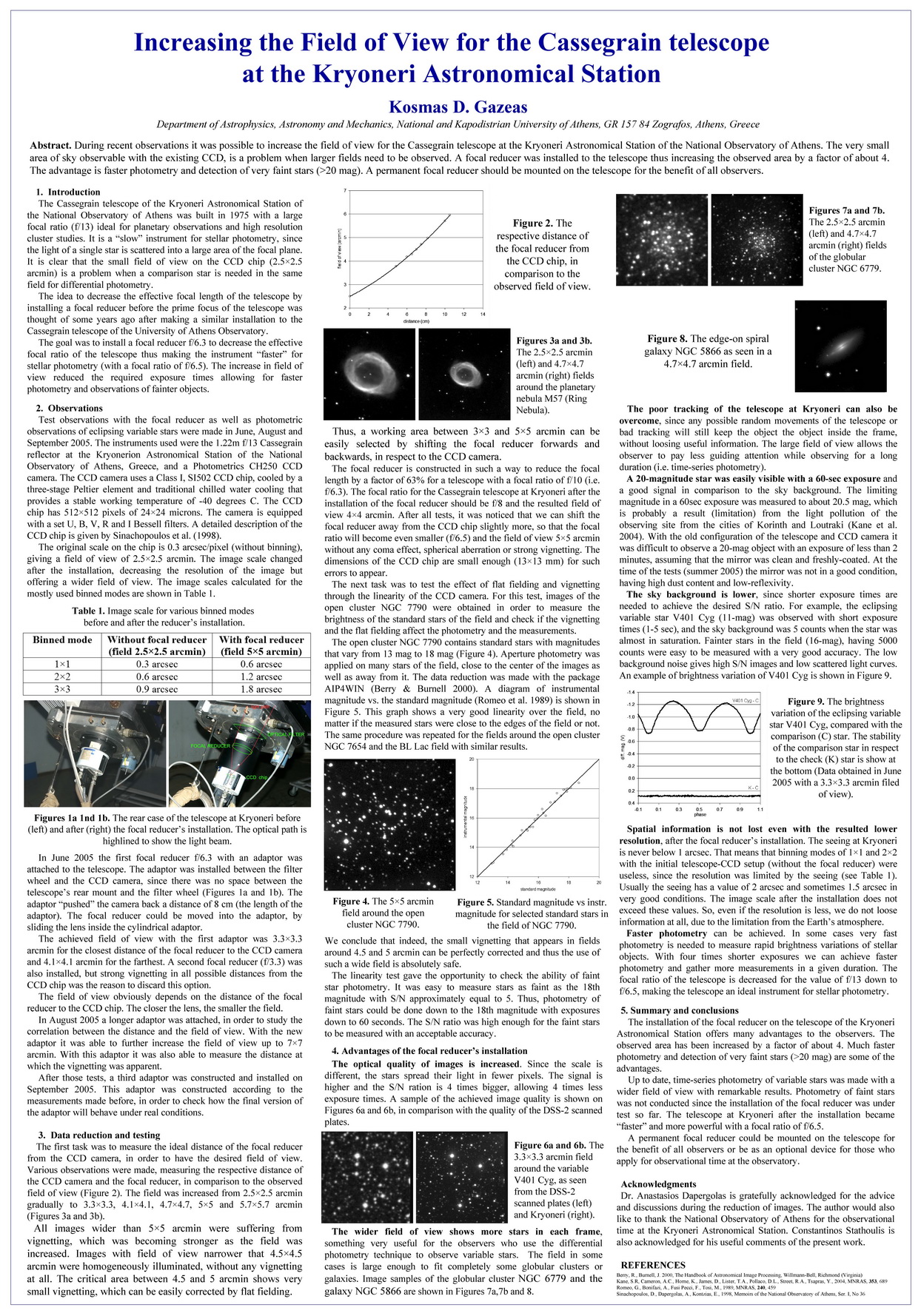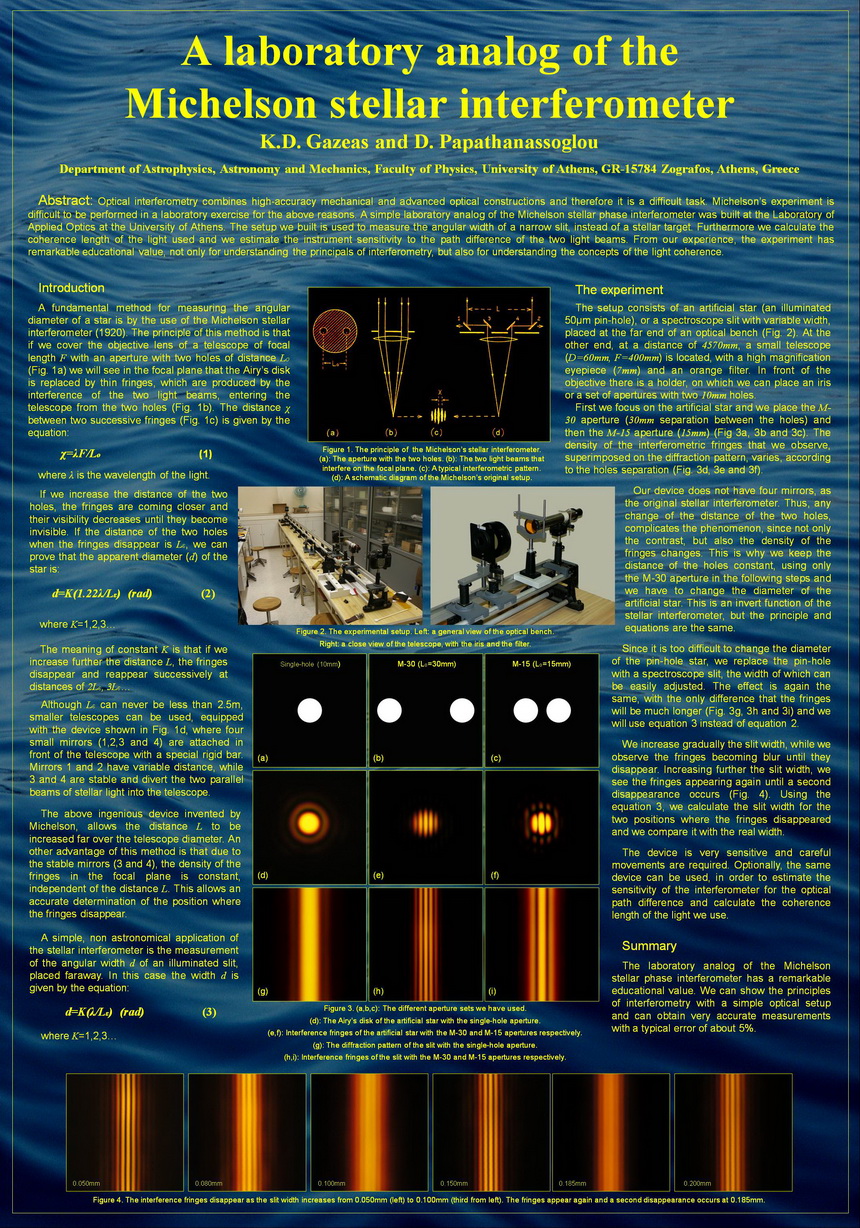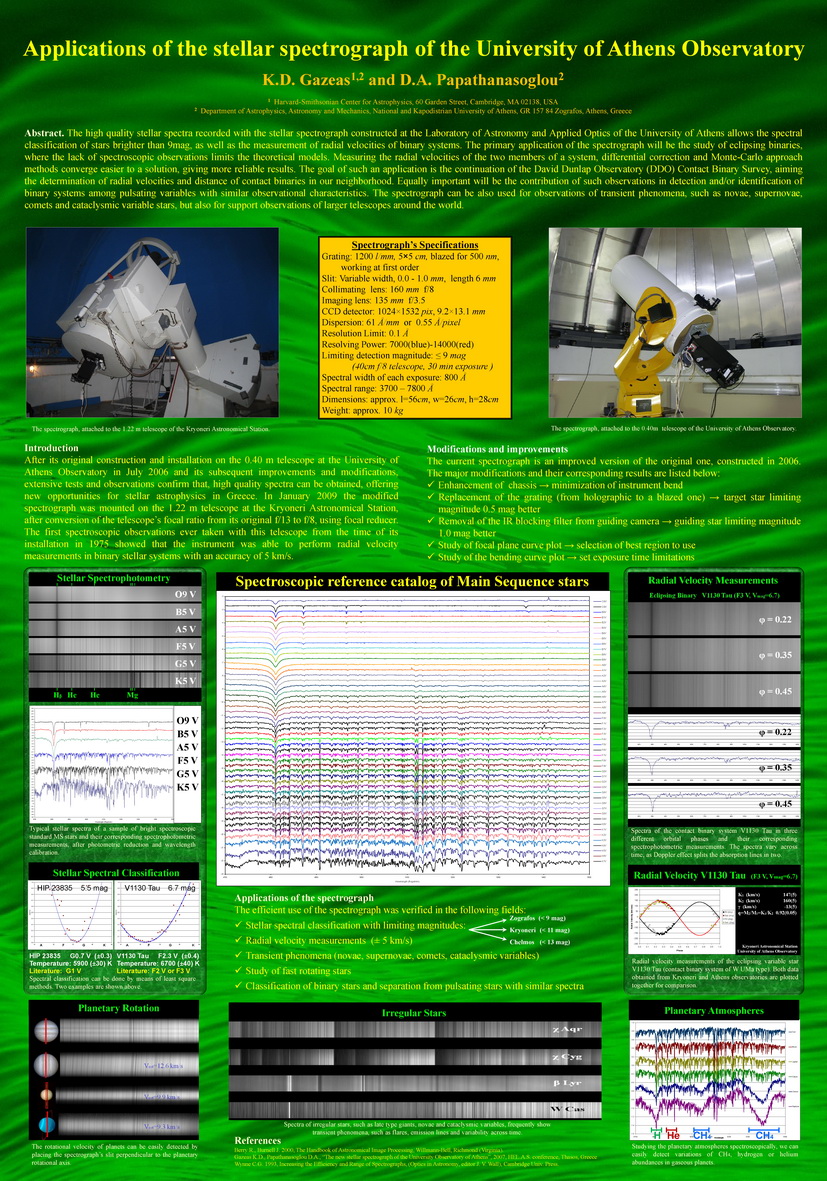Laboratory of Astronomy and Applied Optics
The Laboratory of Astronomy is one of the oldest laboratories at the University of Athens, established in 1896 by Prof. D.Aiginitis. Applied Optics was later introduced (in 1980's) in the already existing laboratory. Research and educational activity takes place in various fields, utilizing optical instruments and devices for solar and stellar observations and other optical applications. After the movement of the laboratory to the building of the Department of Physics, new research and educational projects were initiated by Prof. D. Papathanassoglou and later followed by Dr. K. Gazeas.
Today, the Laboratory of Astronomy and Applied Optics is used for the following educational courses:
Every year about 250 students from Physics Department and 150 from Mathematics Department are trained at the Laboratory of Astronomy and Applied Optics. For the educational courses, the Laboratory is equipped with the necessary instruments, in order to perform experiments on the basic optical phenomena, including diffraction, reflection and interferometry.
Selected experimental setup at the Laboratory of Astronomy and Applied Optics at the University of Athens.
Highly accurate optical experiments are performed on specialized optical benches and tables, including:
The laboratory is also equipped with a wide variety of astronomical telescopes, spectrographs and astronomical instrumentation which can be used for research and educational purposes.
A small workshop which is included in the facilities offers the opportunity to modify or build astronomical and laboratory equipment, like the high resolution Littrow-type F=80cm spectrograph, the compact stellar spectrograph installed at the University of Athens Observatory and the robotic-automation and remote control system for the same observatory.
Results from selected experiments, performed at the Laboratory of Astronomy and Applied Optics at the University of Athens.
Stellar spectrograph
In July 2006 a medium-resolution stellar spectrograph has been constructed at the Laboratory of Astronomy and Applied Optics of the University of Athens by Prof. D. Papathanassoglou and K. Gazeas. The instrument was initially built for laboratory applications and later was modified for astronomical use. The spectrograph was mounted on the telescope at the Athens University Observatory, as well as on the telescope at the Kryoneri Astronomical Station in Korinth, Greece. From the beginning the results were very promising and the first results were presented in the 8th HEL.A.S. conference (Sept. 2007). Observations of stellar spectra for classification purposes are already obtained and a stellar spectroscopic atlas was created for the MS stars. The stellar atlas is now under the process of being extended to other luminosity classes (subgiants-giants-supergiants).
The stellar spectrograph is mounted on the telescope at the University of Athens, performing observations for stellar classification purposes.
Focal Reducer
In 2004, the installation of a f/6.3 focal reducer at the 1.2-m telescope at the Kryoneri Astronomical Station in Korinth, Greece, resulted with the increase of the focal field of view four times, resulting with easier pointing of the telescope, faster photometry (of a factor of 4) and wider selection of calibrating stars. This setup is permanently installed on the telescope since 2013 after the agreement with the National Observatory of Athens (NOA) and therefore photometric observations are carried out much easier.
The focal reducer was designed and constructed at the University of Athens and installed on the telescope at the Kryoneri Observatory, offering an increased 5x5 arcmin FoV.
Differential Image Motion Method (DIMM)
The Differential Image Monitoring Method (DIMM) is the most sophisticated method of measuring the seeing conditions in an observing site. The method was used in several observatories in the past, but never in Greece. Between July-October 2002, the necessary equipment was installed by me at the Kryoneri Astronomical Station, in Greece, under the supervision of Dr. Emilios Harlaftis, who initiated the project and the help of my friend and colleague Constantinos Stathoulis. I have made several observations of bright stars, in order to measure the average seeing at one of the most important observing sites in Greece. A median “seeing” of 0.68” and 1.42” was found during July and October 2002, respectively. We also compared the technique against the Hartmann-version of the ESO-standard DIMM method and found similar results within 0.05”. The optical devices will be used in order to measure the seeing conditions at the new 2.3-m telescope site, in Helmos, Greece.
Optical and mechanical constructions for DIMM measurements were installed and operated at Kryoneri Observatory in 2002.
Wide Angle Search for Planets (WASP)
The Wide Angle Search for Planets (WASP) project was first installed in La Palma, Canary Islands in 2000. Its primary aim was to detect extrasolar planets transiting across their star. My personal involvement on exoplanetary research started back in 2001, when the Wide Field Search for Planets (WASP) Project came in Greece. The first version of WASP instrumentation (WASP0) was built by Don Pollacco at Queens University Belfast, utilizing a wide-field (9-degree) 6.3cm aperture F/2.8 CCD camera (Apogee 10, 2Kx2K chip, 16-arcsec pixels). WASP0 rides "piggy-back" on a commercial small telescope, used for tracking. First light images taken in twilight from Belfast on 10 June 2000. During 20 June through 20 Aug 2000, Yianni Tsapras and Dave James observed a field in Draco with WASP0 at the La Palma Observatory in the Canary Islands. Between October 2001 and May 2002, WASP0 was observing from Kryoneri Astronomical Station, in Greece. This is when I took part on WASP Project, under the supervision of Emilios Harlaftis and the help of my friend and colleague Constantinos Stathoulis. In the frame of this project I installed the observational instruments and the necessary setup, needed to run a new international collaboration and I had also obtained the first observations of Hyades open cluster, as well as the Draco field. The project turned to produce many new variable stars and the 150 Gbyte o data are still under analysis. In the frame of this project, the new transient planet HD 209458b was followed-up. Today the successor project SuperWASP is an observing campaign which consists of two robotic observatories in La Palma and South Africa. They operate continuously all year long, allowing full coverage of both hemispheres of the sky.
WASP0 was moved in Greece and operated at Kryoneri Observatory in 2001-2002. Optical and mechanical setup were done by Kosmas Gazeas and Constantinos Stathoulis, under the supervision of Emilios Harlaftis.
Robotic and Fully Remote Controlled Telescope
The 40 cm f/8 Cassegrain telescope at the University of Athens operated since November 1999. It is constructed by DFM Engineering Group and it belongs to the robotic class of telescopes. Since August 2012 the telescope and dome can be fully controlled remotely, enabling the observations from any place via internet connection. This is the first robotic and fully remote controlled telescope operating in a Greek Institute.
The first robotic and fully remote controlled telescope in Greece has reached a 75% of annual usage (~280 clear nights), out of which more than 50% are of excellent photometric quality.
Collaborators
Collaborators on projects related to applied optics and instrumentation include:
Publications
Publications released after research on optics and optical instrumentation are:
